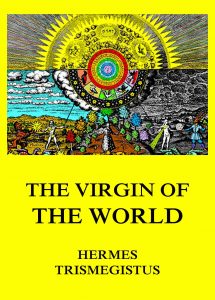The Virgin of the World – Hermes Trismegistus
The Virgin of the World is one of the most prominent Hermetic books, one of the last monuments of Paganism. The Fragments comprised in this reprint have been the subject of much learned research. In the early centuries of Christianity they enjoyed a high repute as of undoubted genuineness, the Fathers invoking their testimony on behalf of the Christian mysteries, while Lactantius–the “Christian Cicero”–said of them, “Hermes, I know not how, has discovered well-nigh the whole truth.” He was regarded as an inspired revealer, and the writings which bore his name passed for genuine monuments of that ancient Egyptian theology in which Moses had been instructed. And this opinion was accepted by Massilius Ficinus, Patricius, and other learned men of the Renaissance, who regarded them as the source of the Orphic initiations and of the philosophy of Pythagoras and Plato.
Format: Paperback.
The Virgin of the World.
ISBN: 9783849674151.
Available at amazon.com and other venues.
Thrice-Greatest Hermes (from wikipedia.com)
Fowden asserts that the first datable occurrences of the epithet “thrice great” are in the Legatio of Athenagoras of Athens and in a fragment from Philo of Byblos, circa AD 64–141. However, in a later work, Copenhaver reports that this epithet is first found in the minutes of a meeting of the council of the Ibis cult, held in 172 BC near Memphis in Egypt. Hart explains that the epithet is derived from an epithet of Thoth found at the Temple of Esna, “Thoth the great, the great, the great.” The date of Hermes Trismegistus’s sojourn in Egypt during his last incarnation is not now known, but it has been fixed at the early days of the oldest dynasties of Egypt, long before the days of Moses. Some authorities regard him as a contemporary of Abraham, and some Jewish traditions claim that Abraham acquired a portion of his mystical knowledge from Hermes himself (Kybalion).
Many Christian writers, including Lactantius, Augustine, Giordano Bruno, Marsilio Ficino, Campanella, and Giovanni Pico della Mirandola, considered Hermes Trismegistus to be a wise pagan prophet who foresaw the coming of Christianity. They believed in a prisca theologia, the doctrine that a single, true theology exists, which threads through all religions. It was given by God to man in antiquity and passed through a series of prophets, which included Zoroaster and Plato. In order to demonstrate the verity of the prisca theologia, Christians appropriated the Hermetic teachings for their own purposes. By this account, Hermes Trismegistus was either a contemporary of Moses, or the third in a line of men named Hermes, i.e. Enoch, Noah, and the Egyptian priest king who is known to us as Hermes Trismegistus on account of being the greatest priest, philosopher, and king.
This last account of how Hermes Trismegistus received that epithet is derived from statements in the Emerald Tablet of Hermes Trismegistus, that he knows the three parts of the wisdom of the whole universe, the three parts being alchemy, astrology, and theurgy. It was Marsilio Ficino who stated that “they called him Trismegistus because he was the greatest philosopher and the greatest priest and the greatest king”.
Another explanation, in the Suda (10th century), is that “He was called Trismegistus on account of his praise of the trinity, saying there is one divine nature in the trinity.”
(The text of the last section was taken from a Wikipedia entry and is available under the the Creative Commons Attribution-ShareAlike License.)
Publisher’s Note: This book is printed and distributed by Createspace a DBA of On-Demand Publishing LLC and is typically not available anywhere else than in stores owned and operated by Amazon or Createspace.

